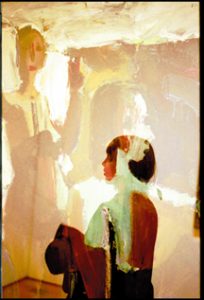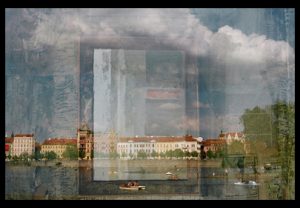
Within the department, Peter Filene is known for being an extraordinary teacher, the longtime director of the Committee on Teaching, the namesake of the department’s TA award for creative teaching, and a committed mentor to graduate students. Since his retirement, Filene has exchanged the world of academia for the world of art, but he has never forgotten his passion for teaching.
Today, Filene is a prominent local photographer, an interest inspired by his experiences in the classroom. As a professor, Filene was known for his use of visual “texts,” and he challenged students to think about the theoretical and practical problems of sources. Teaching students how to “read” photographs, paintings, and films as historical sources eventually motivated Filene to teach a course on the history of photography, a decision that led him to begin taking photographs himself.
“I began to feel wistful for an expression of myself that went beyond words and beyond archive research,” Filene explained. “I said, I need some sustenance for my soul and began making black and white photos.”
Filene became committed to developing his skills as a photographer, enrolling in various workshops and courses, including a summer school class at UNC-CH. Now, Filene is one of the members of the Franklin Street Arts Collective, more commonly known as the FRANK Gallery, which is located on East Franklin Street in Chapel Hill. FRANK is operated by its artist members; a gallery manager is the only paid employee. Artists not only display and sell their work, but volunteer with the day-to-day tasks of running the gallery.
Of Filene’s series of photographs, some of which are on display at FRANK, Double Exposures is particularly striking. Double Exposures was Filene’s first attempt at fine art photography. To create the pieces in this series, including the ones you see here, Filene takes a photograph, then does not advance the film so that he can take a second photograph over the first. The images appear superimposed on one another, and it is often difficult to tell where one photograph ends and the next begins.

Filene stumbled upon this method. He had been wandering the streets of Paris, taking photographs of shutters, when it occurred to him to try something different. “I thought, you know, this photo’s going to turn out just like the others. What is it that I’m imagining should be happening here? If only I could paint on top of the photo, but I can’t. It was one of those ‘aha’ moments, built out of an impasse,” Filene recalled. He was inspired to take a photograph of an abstract painting in an art gallery across the street without first advancing the film.
“And it was beautiful,” Filene said. “Suddenly I thought, I’m onto something here. And I kept doing it—double exposures.” Double exposures continue to interest Filene because of what he calls “the marriage of intention and chance” inherent in the method. He will walk the streets of Paris or New York to find what seems like a perfect image to superimpose upon his first photograph, but he’ll never quite know how the final product will look until he returns to the darkroom to develop the film.
In one of Filene’s more recent series, Peeling Posters, he captures the effects of weather and time on posters. Geometric lines reminiscent of a cityscape are interspersed with the brilliant, sometimes clashing colors of the layered posters, seemingly reflecting the whirlwind of urban life.
Filene has come to realize that his historian’s mind has shaped the focus of this series, even if he did not necessarily realize this influence when he began shooting. “Somebody much later pointed out to me: don’t you think that, as an historian, you’re attracted to things that happen over time? And I said—Wow! I wasn’t conscious of that. … These double exposures are also made over time. Time awareness is built into the way I look at things,” Filene explained.
Besides being a prominent local photographer, Filene is a published novelist, and he also teaches retired adults. While fiction remains an interest, Filene is currently focused on nonfiction writing. He is finishing a book that uses short biographies to examine the relationships between fathers and sons and the meaning of fatherhood in United States history.
While Filene is greatly enjoying the art world, he has very fond memories of his time in the Department of History at UNC-CH. “I remember my students, especially the graduate students because they hang around for a long time and there’s a real relationship there. … I loved the undergraduates from the get go. Graduates students, well, reminded me of graduate school. And then I started [advising graduate students], and it was so rewarding. So, if they’re out there, they ought to know that I’m grateful to them,” Filene said. “I couldn’t have had a better life than teaching history at Carolina.”
–Aubrey Lauersdorf
